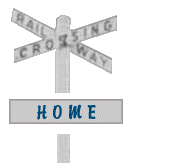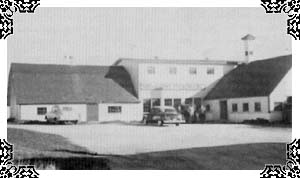








Only a small fraction of the fish hauled off Island shores could be used by the community itself. Without exports, there was no fishing industry, and exporting meant packaging the fish in such a way that it could keep over long distances. As a result, fish processing factories began sprouting up all across the Island, and became the major employer in many seaside communities. Between 1870 and 1880, the number of people employed by fishing and fish processing more than tripled, going from 1,600 to 5,800. With more factories, the amount of seafood processed on the Island increased at an astronomical rate. In 1870, only 6,700 pounds of lobster found its way into cans. By 1882, however, over 4.8 million pounds of lobster meat rolled out of Island canneries, destined for the export market.
The opening of a cannery was no simple feat, as there was competition for workers during the short season and investment capital was not always easy to come by. Even so, there were 227 lobster canneries up and running on the Island by 1901, and Kensington and area played its part in the thriving industry. Russell Champion owned and operated a lobster factory at Darnley Basin between 1910 and 1915. In 1947, he established another at the Whaleback-- or Jerry's Rock-- and continued to run the factory until 1954, when the buildings were moved to Kensington.
The Cousins's lobster factory was established in 1894 at Seaview (map). Its owner, John S. Cousins, was instrumental in convincing the government to change the dates of the Island lobster season, which at the time stretched from April to the middle of July. Cousins proposed the implementation of a shorter season, running from the first of May to the end of June. Based on his experience in the fishery, he insisted that heavy ice floes made April fishing hazardous, and that the quality of lobsters began to wane by July. In 1946, the cannery moved to the French River and has operated there ever since, processing lobster, clams and fish during the summer months.
Most lobster canneries were quite extensive operations, sprawling out into several different buildings. The workers ate their meals and even sometimes lived in the cookhouses built adjacent to the plant. The already canned lobster was stored in can shops, and at least in the early stages, teams of horses had to be kept on hand to haul fresh water back and forth all day. This steady stream of fresh water was needed because all the lobster needed to be cooked prior to canning, as there was no other means of refrigeration apart from blocks of ice. Because lobster needed to be packaged as soon as it arrived, many plants operated around the clock in season, struggling to keep up with the arriving boatloads. Most local canneries then sold their products to a Charlottetown broker, who would arrange for their export.
 Another important
player in local fish processing was North Shore Packing
in Darnley(map). In 1949, the Murphy family purchased the Keir
Brothers fish plant, a small operation with twelve boats.
Over the next thirty years, the Murphys expanded North
Shore Packing greatly, and by 1981, it commanded a fleet
of 150 boats and purchased lobster from communities all
over the Island. At its peak, it employed up to 125
people and shipped its products worldwide, from the West
Indies to Scandinavia to the Netherlands. But even this
large operation was not immune to changing times and
changing markets. North Shore Packing was the last plant
to process fish in the Malpeque area.
Another important
player in local fish processing was North Shore Packing
in Darnley(map). In 1949, the Murphy family purchased the Keir
Brothers fish plant, a small operation with twelve boats.
Over the next thirty years, the Murphys expanded North
Shore Packing greatly, and by 1981, it commanded a fleet
of 150 boats and purchased lobster from communities all
over the Island. At its peak, it employed up to 125
people and shipped its products worldwide, from the West
Indies to Scandinavia to the Netherlands. But even this
large operation was not immune to changing times and
changing markets. North Shore Packing was the last plant
to process fish in the Malpeque area.
Mussel farming is one area of fish processing that has recently experienced growth on the Island. Opened in 1978, L&C Fisheries of French River began as a seasonal lobster-packing operation before branching out into the mussel industry. Now, the family-owned processor remains open year-round and has also started another operation, Green Gables Mussels. In 1997, its employees shipped 1.5 million pounds of mussels across Canada and the United States. While lobster processing may never provide as many jobs as it did in the past, the fishing industry is hoping these new areas of production can begin to fill some of the gaps it left behind.
